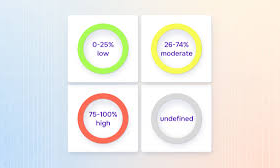What Is Crypto Airdrop?
A crypto airdrop is a marketing strategy commonly employed by blockchain projects and cryptocurrency companies to distribute free tokens or coins to a specific group of people. The term “airdrop” is derived from the idea of dropping assets like airdropped supplies during a humanitarian mission. In the context of the crypto world, these assets are usually distributed to holders of a particular cryptocurrency or individuals who meet specific criteria outlined by the project.
Airdrops serve multiple purposes, such as increasing awareness of a new project, rewarding existing token holders, and fostering community engagement. Participants in a crypto airdrop often need to complete simple tasks like joining a Telegram group, following social media accounts, or holding a certain amount of a particular cryptocurrency in their wallets.
While airdrops can be an effective way for projects to bootstrap their communities, participants should exercise caution and verify the legitimacy of the airdrop to avoid potential scams.
What Is Rain.fi Airdrop?
Rain.fi Airdrop is the first fully decentralized, P2P liquidity protocol for NFTs, giving users the ability to lend SOL/USDC/MSOL and finance mortgages. Projects can create a pool with SOL that they can integrate on their website to lend SOL to users.
Rain.fi doesn’t have their own token yet but could launch one in the future. They’ve introduced a points system where users could earn droplets for interacting with the platform. Users who earn droplets may get an airdrop if they launch their token.
Basic Rain.fi Airdrop Points
| Basic | Details |
|---|---|
| Token Name | Rain.fi Airdrop |
| Platform | Solana |
| Support | 24/7 |
| Total value | N/A |
| KYC | KYC Is Not Requirement |
| Whitepaper | Click Here To View |
| Max. Participants | Unlimited |
| Collect Airdrop | Click Here To Collect Free Airdrop |
How To Claim Rain.fi Airdrop Step-by-Step Guide:
- Visit the Rain.fi website.
- Connect your Solana wallet.
- You will need some SOL and/or other tokens. You can get them on Binance.
- Click on “Borrow”, select the amount you want to collateralize and borrow tokens.
- You could also collateralize NFTs and borrow tokens.
- Also, go to “Lending” and lend some tokens.
- They have a points system where users can earn “Droplets” for lending and borrowing on the platform. Users can earn one Droplet for every ten dollars they spend on lending and borrowing.
- Users who earn “Droplets” may get an airdrop if they launch their token in the future.
- Please note that there is no guarantee that they will do an airdrop to early users or launch their own token. It’s only speculation.
How To Check Rain.fi Airdrop Is Real Or Fake
Checking the legitimacy of a crypto airdrop can be a bit tricky, as scammers often use sophisticated techniques to create fraudulent airdrop campaigns that appear to be legitimate. Here are some steps you can take to verify the authenticity of a crypto airdrop:
- Official Website: Visit the official website of Rain.fi using a secure and verified link. Ensure that the URL is correct and matches the official domain. Double-check for any announcements or blog posts on the official website regarding the airdrop.
- Social Media Accounts: Verify the official social media accounts associated with Rain.fi. Official announcements and updates are often posted on platforms like Twitter, Telegram, or Discord. Look for verification badges on social media to confirm the authenticity of the account.
- Community Discussions: Join reputable cryptocurrency and blockchain communities to see if there are any discussions or threads related to the Rain.fi airdrop. Look for comments or posts from official representatives of Rain.fi confirming the legitimacy of the airdrop.
- Whitepaper and Documentation: Check the official whitepaper or documentation of Rain.fi for information about the airdrop program. Legitimate projects usually provide comprehensive documentation.
- Contact the Team: Reach out to the official team behind Rain.fi through their official communication channels. This could include email, social media, or other specified contact methods. Be cautious of potential scams, and do not share sensitive information unless you are certain of the legitimacy.
- In summary, it’s important to conduct thorough research, verify the source and instructions, look for feedback from other users, and trust your instincts when evaluating the legitimacy of a crypto airdrop. By taking these steps, you can minimize the risk of falling for a fraudulent airdrop and protect your assets and personal information.
What are the risks of participating in an airdrop?
Participating in an airdrop, which involves the distribution of free tokens or cryptocurrency to a community of users, carries various risks that individuals should carefully consider before taking part. One significant risk is the potential for scams and fraudulent schemes. Unscrupulous actors may create fake airdrops to trick participants into revealing sensitive information or downloading malicious software. Additionally, the value of airdropped tokens can be highly volatile, and participants may find themselves holding assets that rapidly lose value or become worthless.
Moreover, regulatory uncertainties surrounding airdrops pose legal risks, as authorities in some jurisdictions may later classify certain airdrops as securities, subjecting participants to legal consequences. Furthermore, the sheer number of airdrops can overwhelm participants, making it challenging to differentiate between legitimate projects and those with dubious intentions. Overall, individuals should exercise caution, conduct thorough research, and verify the legitimacy of airdrops to mitigate the associated risks.
Rain.fi Airdrop Pros Or Cons
Pros of participating in an airdrop:
- Decentralization: Rain.fi is fully decentralized, providing users with a P2P liquidity protocol for NFTs. This decentralization can enhance security, transparency, and censorship resistance.
- Liquidity Options: Users have the ability to lend SOL, USDC, and MSOL, providing a range of liquidity options. This flexibility can attract a diverse user base and contribute to the platform’s overall liquidity.
- Mortgage Financing: Rain.fi enables users to finance mortgages, expanding its utility beyond simple lending. This feature may attract users looking for decentralized mortgage solutions.
- Integration for Projects: Projects can create pools with SOL and integrate them into their websites, allowing for seamless lending of SOL to users. This integration capability can foster collaboration and partnerships within the crypto and NFT community.
Cons of participating in an airdrop:
- No Native Token (Currently): The absence of a native token may limit the immediate benefits for users who are accustomed to participating in ecosystems with their own tokens. This could potentially hinder the platform’s competitiveness in the DeFi space.
- Token Launch Uncertainty: While the points system offers potential airdrops, the uncertainty around the launch of Rain.fi’s own token may create ambiguity for users who are looking for a clear roadmap and tokenomics.
- Risk of Platform Adoption: The success of Rain.fi depends on user adoption and integration by projects. If the platform struggles to gain traction or faces challenges in attracting users and projects, it may limit its overall impact.
Rain.fi Airdrop Final Verdicts
In conclusion, Rain.fi emerges as a groundbreaking player in the decentralized finance (DeFi) space, introducing a revolutionary P2P liquidity protocol specifically designed for NFTs. By facilitating lending for popular assets such as SOL, USDC, and MSOL, Rain.fi empowers users with new avenues for financial interaction and mortgage financing within the blockchain ecosystem.
What sets Rain.fi apart is its commitment to decentralization, allowing projects to seamlessly integrate pools on their websites and lend SOL to their users. This not only promotes financial inclusivity but also fosters a collaborative environment within the decentralized finance landscape.
While Rain.fi currently operates without its own native token, the platform has laid the groundwork for potential future developments in this regard. The introduction of a points system, wherein users can earn droplets by actively engaging with the platform, adds an innovative layer to the ecosystem. These droplets, earned through user interactions, may potentially lead to airdrops in the event of a future token launch, creating an incentive structure that aligns the interests of the community with the platform’s growth.







































